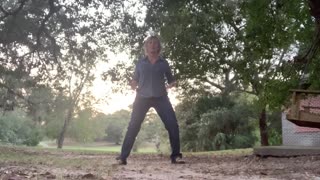Premium Only Content

most powerful plant in ancient China: You will not believe what can help you this old and true plant
Lesus is a root, also called the root of the sous sweat, and its useful and cultural characteristics are almost infinite. Also contains a very complex chemical nutrient combination, making it unique between medical plants. Contains more than 150 chemically compounds contribute to almost all human body systems. Among the nutrients and the medical components of the Lisxian sweat, among other things, amino acids, vitamins, minerals, beta carotene, carbohydrates, proteins and good fats. The Susseus root also contains a glycerine acid, glycomin and glucose, which has very therapeutic properties, and has a particularly useful effect on the respiratory and gastrointestinal system, so these components are used to making cough and gastric ulcer In addition to the pneumatic people, the infant influence is very strong on our immune system. Several studies confirmed that stimulating his healing and strengthening his proper work, by preventing and spreading viruses. It is an excellent drug favored for a large number of viral infections, including hepatitis, colds and flu. When it comes to an immune, it gives the best results with Call and Lemon. There is another useful influence for the brochure and is on the digestive system. This herb has been very effective in the treatment of stomach ulcer, adhesion and gastrointestinal inflammation and gastric acid (stomach and stomach hypertext). For stomach problems, it is best to merge with St. John's plant and longevity. Excellent licorice in organizing hormonal disorders This is particularly applicable to men with prostate problems or hair loss. In this case, the sous sweat is perfectly integrated with juniper and chill. Loss is used in traditional Chinese medicine for more than 2000 years and is an indispensable medicine. Even the famous doctor of Ming's strain was written in the medical encyclopedia at the time that the sussell has an useful effect on more than 70 species of diseases.
-
 0:13
0:13
FJtv4
4 years ago $0.31 earnedWhat just happened? You will not believe.
1.99K3 -
 6:13
6:13
blakebuzz
4 years ago $0.02 earnedYour life reveals what you believe.
2951 -
 0:43
0:43
RockyW36
4 years ago $0.18 earnedYou won't believe what happens
7241 -
 0:19
0:19
NurseBrenton
4 years ago $0.08 earnedYou won't believe what this dog does!
298 -
 0:38
0:38
ImpulsiveD
4 years agoPowerful Waves Crash On The Rocky Shore of China Cove, CA
81 -
 51:07
51:07
The Pentecostals of Sydney
4 years agoWhose Report Will You Believe - Ben Finn
16 -
 1:57
1:57
Foret Films
4 years ago $0.41 earnedSay what you will
434 -
 0:14
0:14
natebelt83
4 years ago $0.02 earnedI BELIEVE THAT WE WILL WIN
519 -
 19:13
19:13
Truth For Living
4 years ago $1.12 earnedDo You Believe
1.88K1 -
 3:02
3:02
Ms G Easy Tai Chi
4 years ago $0.23 earnedWhat will 4 Minutes Do for YOU?
461